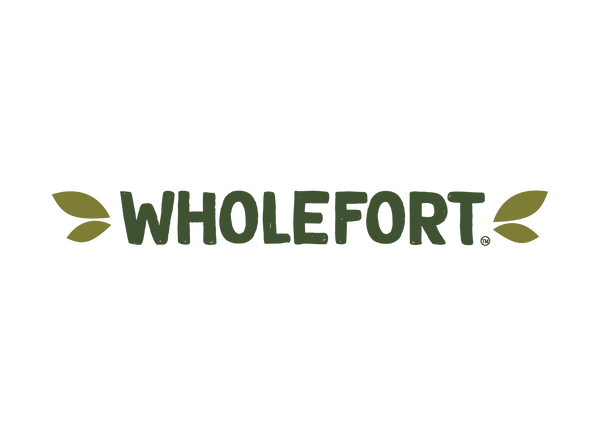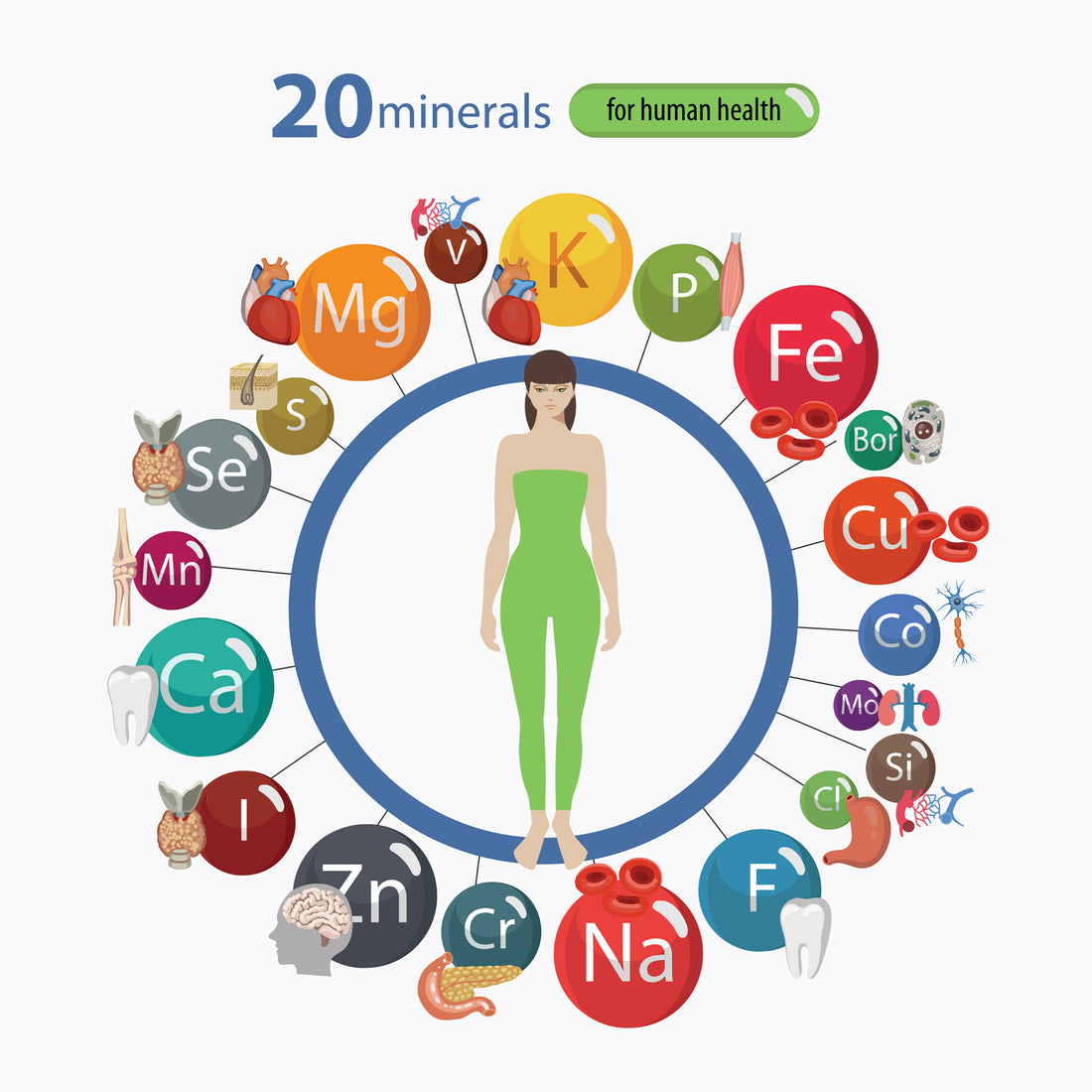MICROMINERALS (PART 1)
Written by Antonio Reyes RDN
In this chapter we’re going to talk about microminerals, they are called like that because we need them from the diet in very low amounts, ranging from less than 100 mg daily to micro-grams, they are also called trace element, they are 10 in total but in this first part we are going to talk about the first five:
Iron, Manganese, Iodine, Boron, and Selenium.
Iron

Iron is probably the most important of all microminerals, depending on the nutritional status of a person it can turn into an essential mineral due to deficiency.
Approximately 70% is found in red blood cells; approximately 25% is stored in the form of Ferritin (the intracellular protein that stores iron) in organs and tissues like the liver, spleen and red bone marrow. Iron is essential for oxygen transfer, therefore there is almost no free iron in the blood. There are two forms of Iron, one is called Heme Iron and the other non-Heme Iron.
Heme Iron is biologically superior as it is readily available (absorbed) once ingested due to its structure, Heme iron is found mainly in red meat.
Key Note: In vegan diets, Heme Iron is absent, in the short term symptoms of iron deficiency may not show due to Ferritin stores, but in the long run Iron deficiency anemia can occur, so it's important to supplement with Vitamin C, this vitamin helps non-Heme Iron to be better absorbed. Also, due to woman physiology in the menstrual cycle, sensible blood loses can occur and anemia can appear, the best way to monitor is to do a blood work every 3-4 months especially if Menorrhagia (the medical term for menstrual periods with abnormally heavy or prolonged bleeding) is or have been experienced.
Best Sources (Heme Iron): red meat, egg yolk, poultry, and fish.
Best Sources (Non-Heme Iron): Legumes, whole or enriched grains, and dark green vegetables.
RDI: 8 - 18 mg
Key Note #2: During pregnancy, iron deficiency anemia can occur because Iron stores (Ferritin) are further used due to increased blood volume for the growing fetus, therefore RDI can go up to 18-28 mg/day if needed.
Also, it is possible that the RDI of Iron is higher in men because of their higher red blood cell production due to testosterone.
Deficiency
Microcytic anemia (is defined and diagnosed as the presence of small red blood cells in the blood) causing fatigue, intestinal disorders, lack of concentration, decreased immune system and difficulty maintaining body temperature (cold extremities). Babies and children with iron deficiency (Microcytic anemia) may develop learning difficulties.
Toxicity
High doses of iron (trough supplements) can cause upset stomach, constipation, nausea, abdominal pain, vomiting, fainting and it can also reduce the absorption of zinc.
There is a congenital inborn error of Iron accumulation in red blood cells called Hemochromatosis. If left untreated it can cause serious problems such as liver cirrhosis, liver cancer, and heart disease, Iron toxicity can be dropped to safe levels by regularly removing blood from the body. People with this disease should not take iron or vitamin C supplements.
Manganese

The highest concentration of manganese is in the bone tissues, because of that it helps in the formation of bone cartilage, bone collagen and bone mineralization (the process of making "hard" tissues of the skeleton).
There are also relatively high concentrations in the liver, pituitary gland, pancreas, and digestive tissue. Manganese is a very important mineral that works as a co-factor (helper) of enzymes (proteins) in liver cells, therefore aiding in the metabolism of cholesterol, carbohydrates, and protein.
Best Sources: green vegetables, cranberries, whole grains, and dried fruits.
RDI: 1.8 - 2.6 mg
Deficiency
Deficiency is rare, but if so, symptoms may include impaired growth of reproductive function, bone tissues, and altered glucose/cholesterol metabolism.
Toxicity
High doses or a chronic exposure (high inhalation) of this mineral in occupational settings can cause Manganism a neurological disorder which is characterized by walking impairments, tremors, and loss of facial expression, resembling Parkinson's disease.
Iodine

Iodine is a constituent of the hormones Thyroxine (T4) and Triiodothyronine (T3) synthesized by the thyroid gland. These hormones regulate the use of oxygen (bioavailability to use it inside the cell for energy) and basal metabolism (the use of lipid for energy at rest), they are also implicit in growth and development in the early years.
Best Sources: fish, cod, tuna, seaweed, shrimp, fruits and vegetables.
Key Note: The amount of iodine in fruits and vegetables depends on the soil where they were grown.
RDI: 150 - 220 mcg
Deficiency
In the first world, countries are very difficult to develop Iodine deficiency because regular table salt is enriched with this mineral, nevertheless in underdeveloped countries in leads to Goiter (an abnormal enlargement of the thyroid gland). In infants, it can develop to cretinism (delayed physical and mental development).
Toxicity
Consuming high doses of Iodine (more than 1 g/day) can cause burning in the mouth, throat, and stomach. As in deficiency, Goiter is also a sign of toxicity.
Boron

Boron's exact physiological role is poorly understood, it is established that in human metabolism can aid in the differentiation/growth of steam cells. Boron supplementation is used in medicine to enhance bone tissue-like in osteoarthritis, in men, it can help to increase testosterone levels when low concentrations are diagnosed, to a lesser extent it may improve thinking skills and muscle coordination.
Best Sources: almost all fruits and vegetables.
RDI: There is no Recommended Daily Intake for boron. A balanced diet that includes fruits and vegetables will suffice in boron needs.
Deficiency
Very rare assuming there’s no intake of fruits and/or vegetables for a very long time, Studies suggest that Boron deprivation alters the metabolism of several minerals like zinc, calcium, and magnesium, therefore it can influence the action of hormones such as insulin, estrogen, testosterone, and diminished bone tissue.
Toxicity
High amounts can be harmful, in pregnant women it has been linked to birth defects.
Selenium

Selenium participates in cardiovascular (heart) functions, it also aids in the synthesis of our endogenous antioxidant molecule “Glutathione (GSH)” to fight against oxidative stress (free radicals).
In addition to the aid in GSH synthesis, Selenium participates in cell development, cell signaling pathways, and DNA transcription factors.
Best Sources: seeds, onions, meats, and milk. Also vegetables depending on the selenium content in the soil.
RDI: 55 mcg
Deficiency
Keshan's disease, a myocardial (the muscle tissue of the heart responsible for pumping blood) abnormality.
It could also cause Kashin-Beck disease, a type of arthritis that causes pain, inflammation, and loss of movement in the joints, nevertheless, the pathogenesis is multifactorial (combination of nutritional, environmental, immunological, genetic, and infectious factors), in the nutritional aspect, besides selenium deficiency other micronutrients deficiencies needs to be present like iodine, vitamin A, D, E, and calcium.
Toxicity
High doses (more than 400 mcg per day) are toxic and can cause vomiting, hair loss, nail loss, and skin wounds.
Bibliography:
Abbaspour, N., Hurrell, R., & Kelishadi, R. (2014). Review on iron and its importance for human health. Journal of research in medical sciences: the official journal of Isfahan University of Medical Sciences.
Horning, K. J., Caito, S. W., Tipps, K. G., Bowman, A. B., & Aschner, M. (2015). Manganese Is Essential for Neuronal Health. Annual review of nutrition.
Carriquiry, A. L., Spungen, J. H., Murphy, S. P., Pehrsson, P. R., Dwyer, J. T., Juan, W., & Wirtz, M. S. (2016). Variation in the iodine concentrations of foods: considerations for dietary assessment. The American journal of clinical nutrition.
Elmadfa, I., & Meyer, A. L. (2014). Developing suitable methods of nutritional status assessment: a continuous challenge. Advances in nutrition.
Beluska-Turkan, K., Korczak, R., Hartell, B., Moskal, K., Maukonen, J., Alexander, D. E., Siriwardhana, N. (2019). Nutritional Gaps and Supplementation in the First 1000 Days. Nutrients.
Combs, G. F., Jr, Watts, J. C., Jackson, M. I., Johnson, L. K., Zeng, H., Scheett, A. J., Milner, J. A. (2011). Determinants of selenium status in healthy adults. Nutrition journal.


2 comments
ndCmAoztYEkJS
HUGhfSbCdZzsoR